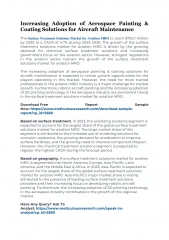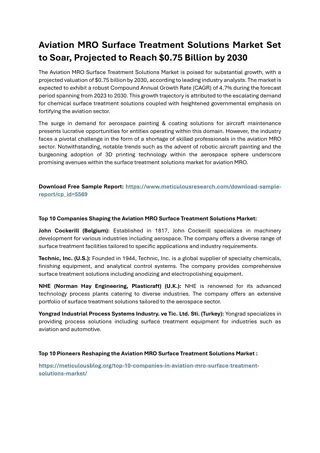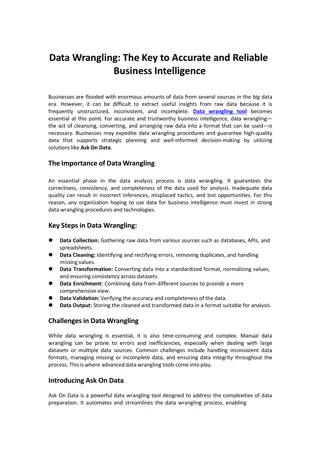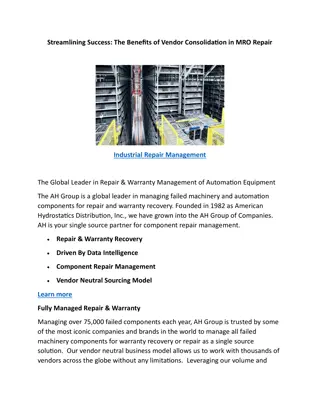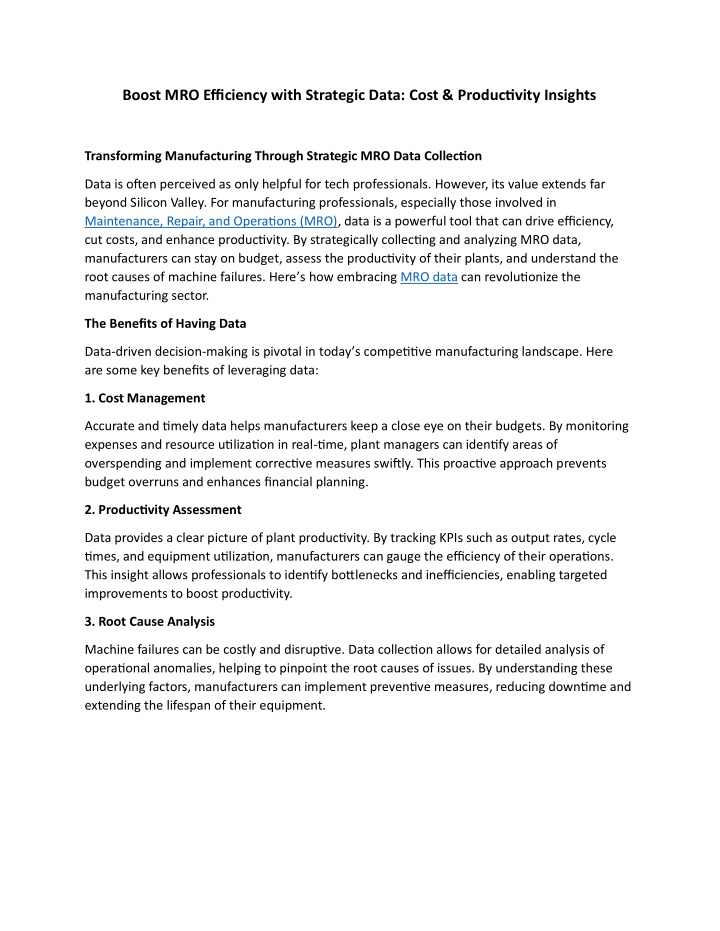
Boost MRO Efficiency with Strategic Data
Unlock the power of MRO data in manufacturing! By strategically collecting and analyzing key metrics, manufacturers can drive efficiency, control costs, and boost productivity. Discover how data-driven decisions transform operations, enhance quality,
Download Presentation

Please find below an Image/Link to download the presentation.
The content on the website is provided AS IS for your information and personal use only. It may not be sold, licensed, or shared on other websites without obtaining consent from the author. If you encounter any issues during the download, it is possible that the publisher has removed the file from their server.
You are allowed to download the files provided on this website for personal or commercial use, subject to the condition that they are used lawfully. All files are the property of their respective owners.
The content on the website is provided AS IS for your information and personal use only. It may not be sold, licensed, or shared on other websites without obtaining consent from the author.
E N D
Presentation Transcript
Boost MRO Efficiency with Strategic Data: Cost & Productivity Insights Transforming Manufacturing Through Strategic MRO Data Collection Data is often perceived as only helpful for tech professionals. However, its value extends far beyond Silicon Valley. For manufacturing professionals, especially those involved in Maintenance, Repair, and Operations (MRO), data is a powerful tool that can drive efficiency, cut costs, and enhance productivity. By strategically collecting and analyzing MRO data, manufacturers can stay on budget, assess the productivity of their plants, and understand the root causes of machine failures. Here s how embracing MRO data can revolutionize the manufacturing sector. The Benefits of Having Data Data-driven decision-making is pivotal in today s competitive manufacturing landscape. Here are some key benefits of leveraging data: 1. Cost Management Accurate and timely data helps manufacturers keep a close eye on their budgets. By monitoring expenses and resource utilization in real-time, plant managers can identify areas of overspending and implement corrective measures swiftly. This proactive approach prevents budget overruns and enhances financial planning. 2. Productivity Assessment Data provides a clear picture of plant productivity. By tracking KPIs such as output rates, cycle times, and equipment utilization, manufacturers can gauge the efficiency of their operations. This insight allows professionals to identify bottlenecks and inefficiencies, enabling targeted improvements to boost productivity. 3. Root Cause Analysis Machine failures can be costly and disruptive. Data collection allows for detailed analysis of operational anomalies, helping to pinpoint the root causes of issues. By understanding these underlying factors, manufacturers can implement preventive measures, reducing downtime and extending the lifespan of their equipment.
Types of Helpful Data to Collect in Manufacturing Plants To reap the benefits of data, manufacturers must focus on collecting the right types of information. Here are some essential data categories: 1. Operational Data Operational data includes information on machine performance, production rates, and cycle times. This data is crucial for monitoring the efficiency of production processes and identifying areas for improvement. Collecting data on equipment utilization and idle times helps in optimizing resource allocation and reducing waste. 2. Quality Data Quality data involves tracking defects, rework rates, and compliance with industry standards. By analyzing quality metrics, manufacturers can identify trends and root causes of defects, leading to improved product quality and reduced waste. This data is also vital for maintaining customer satisfaction and meeting regulatory requirements. 3. Maintenance Data Maintenance data encompasses records of machine failures, repairs, and preventive maintenance activities. This information is critical for understanding the reliability of equipment and planning maintenance schedules. By analyzing maintenance data, manufacturers can move from reactive to predictive maintenance, minimizing unplanned downtime and maintenance costs.
4. Financial Data Financial data includes information on costs, revenues, and budget adherence. This data is essential for tracking financial performance and ensuring that operations stay within budget. By analyzing financial metrics, manufacturers can identify cost-saving opportunities and improve profitability. 5. Inventory Data Inventory data tracks the levels of raw materials, work-in-progress, and finished goods. Efficient inventory management is crucial for minimizing carrying costs and ensuring that production runs smoothly. Data on inventory levels helps manufacturers optimize stock levels, reduce shortages, and avoid overproduction. 6. Environmental Data Environmental data includes metrics on energy consumption, waste generation, and emissions. Collecting this data helps manufacturers improve their environmental performance and comply with regulations. It also supports sustainability initiatives, which can enhance the company s reputation and reduce operational costs. In the modern manufacturing landscape, data is a game-changer. By collecting and analyzing the right types of data, manufacturing professionals can stay on budget, assess plant productivity, and uncover the root causes of machine failures. Embracing data-driven decision-making leads to more efficient operations, higher product quality, and improved financial performance. As manufacturers continue to navigate the complexities of the industry, leveraging data will be key to maintaining a competitive edge and achieving long-term success. Interested in learning more about how you can collect data surrounding industrial repair? Contact us at info@ahgroupna.com to learn more about our cost savings, sustainability, root cause analysis, and other reports.

